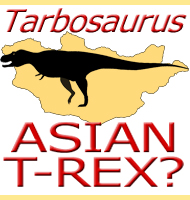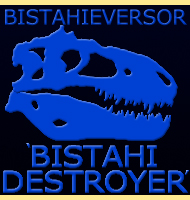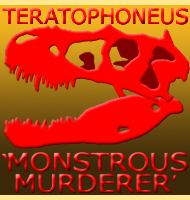


Bagaraatan
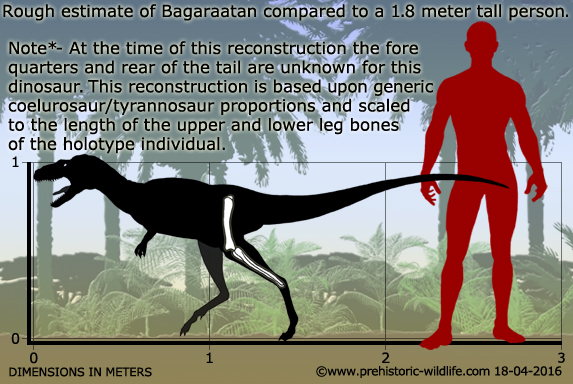
Name:
Bagaraatan
(Small hunter).
Phonetic: Ba-ga-raa-tan.
Named By: Osmolska - 1996.
Classification: Chordata, Reptilia, Dinosauria,
Saurischia, Theropoda - further classification is uncertain, refer to
main text.
Species: B. ostromi (type).
Diet: Carnivore.
Size: Femur 31.5 centimetres long, Tibia 36.5
centimetres long, Fibula 31.5 centimetres long. Total body size is
uncertain due to much of the skeleton being missing, but roughly
estimated on this website to be about 2.7 meters long.
Known locations: Mongolia - Nemegt Formation.
Time period: Maastrichtian of the Cretaceous.
Fossil representation: Mandible (lower jaw) and
partial post cranial remains, including the upper legs, pelvis and
caudal vertebrae.
The
problem with Bagaraatan is that it is only known
from partial remains
that in themselves could be placed within a variety of different
theropod groups. Leading palaeontologists have described Bagaraatan
as
a tyrannosaur,
troodontid
and even a maniraptorian, all of the main
carnivorous theropod classes that were active in Asia towards the end
of the Cretaceous.
Named
after the Mongolian for 'small hunter', the only thing that can be said
about Bagaraatan is that it was a bipedal dinosaur,
like other
theropods, and that it was a carnivore.
Further reading
- An unusual theropod dinosaur from the Late Cretaceous Nemegt
Formation of Mongolia. - Acta Palaeontologica Polonica 41(1):1-38. - H.
Osm�lska - 1996.
----------------------------------------------------------------------------
Random favourites
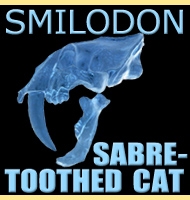 |
 |
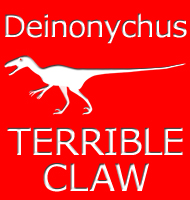 |
 |

